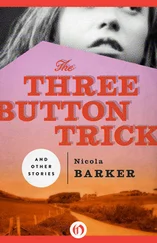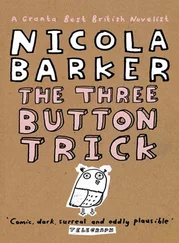One thing worth considering is how the Rani, Sri Ramakrishna, the Brahmo Samaj , and the Bengali Renaissance all have in common a sense of moving forward while still looking keenly back. A kind of easy modernity which passionately celebrates its conservative — even (wince) “primitive”—past. It is intrinsically Kali-esque in nature. It somehow magically transcends the pair of opposites. It is at once of now and of then. A synthesis. A counter-/pro-imperialist, counter-/pro-capitalist farina pudding of yes and no. A milky (distinctly nontransparent) anti-/pro-nationalistic faith-fueled blancmange.
Let’s get back to the dreams. Because there’s still another dream (a second/fourth!). But before we home in on that, let’s imagine the Rani hunting for her piece of land. Or the Rani’s agent (in all likelihood). He sails up the great Hooghly (well, it’s actually the Thames — some swampland down near Canvey Island in which we’ve raised a couple of mock palms. Although his grab — brig — katra —I forget which — is a 100 percent faithful copy, et cetera, et cetera…) searching diligently for the perfect spot. And he finds several.
It’s a matter of common knowledge that the western bank of the Ganga is considered more holy than the eastern side. So that’s where the Rani started her search (hence instantly putting paid to the “first night of the voyage” scenario). But nobody would sell her land on the western side. We are told that the reason is petty jealousy. Perhaps with an added, extra sprinkling of good old-fashioned caste-based (and let’s not forget sexist) hauteur .
So they turn their search to the eastern bank and discover the ancient Moslem funeral ground near Dakshineswar, with its shrine to a holy saint (not to mention a large adjacent plot which supports the bungalow of a nameless European. Although that’s not actually terribly romantic or interesting). Some may think it unpropitious to build a temple over a graveyard. But this is a Kali temple. And Ma Kali is a natural habituée of the cremation ground, is she not?
The land was purchased and building commenced. The designs were magnificent (of course) yet still traditional and classically— classically —Bengali. The whole enterprise (buying the land, shoring up the embankment, raw materials, labor, and another, secondary investment in productive land elsewhere to enable the temple to be self-sustaining after the Rani’s death) meant a total outlay of something approximating one and a quarter million rupee s.
The Rani has persistently made a habit of favoring local craftsmen in many of her numerous commercial and creative commissions over the years. She understands the real ecology of business. She is at once a financial whiz and a respecter of niches. She sees the individual’s face behind each fast rupee . The Rani has commercial nous — more important yet, commercial soul .
The second dream (oh yes — that second dream…) involves the commissioning of the Kali image for her now ( quick! Fast-forward the tape!) almost finished temple. Unlike its giant and spectacular carapace, the image that lies at its heart isn’t huge. It’s actually quite petite, standing only thirty-three and a half inches tall. It should also be noted that just as soon as the sculptor commenced carving the image, the Rani undertook a series of severe austerities (which are required by the scriptures). She spent much of her time in telling beads and prayer. She bathed three times every day. She ate basic vegetarian fare.
The image was soon completed, and the Rani was utterly delighted with it. But before she could finally install it, the temple complex still needed a few extra tweaks and modifications. There were several irritating delays (remember the swift, and that quick peek we had at that large pile of raw materials near the plate-washing ghat still waiting to be used?). In the meantime Ma Kali was stored in a box. But she wasn’t happy there. She began to perspire. Eventually she contacted the Rani (finally! The second dream!) and told her that she wished to be removed from her box and installed in the temple immediately.
Gulp!
Ma Kali, the great creatress, is no respecter of contractual deadlines, it seems. So the Rani — in a panic — searched her calendar for an auspicious day on which to install the image as soon as was conceivably possible. But none suggested itself. So she installed the image anyway, with great aplomb, and under considerable personal duress, no doubt.
If the Rani’s dreams are to be taken seriously, we must inevitably conclude that Ma Kali is not a goddess to be lightly trifled with. She is impatient, unpredictable, and imperious. It should also probably be borne in mind that loyal devotion to such an irascible deity may well involve a certain number of personal privacy violations, funny turns, broken arrangements, canceled holidays, prodigious financial outlays, et cetera, et cetera.
Argh. But we kinda
knew that already, didn’t we?
Here follows a timeless and unifying spiritual message — via the twenty-four-hour/seven-days-a-week live broadcast channel of Sri Ramakrishna — to all religious zealots, humorless fundamentalists, and wishy-washy Western New-Agers:
The Master wants GOD-
— realization not SELF-
— realization!
It’s a subtle distinction, but the ego becomes God. God does not become the ego .
Ah ,
“God is in all men,
But all men are not in God,”
The Master shrugs.
1861, approximately
Mathur Nath Biswas is wandering around the Dakshineswar Kali Temple grounds when a tearful, almost hysterical Sri Ramakrishna comes running up to him, stark naked.
Sri Ramakrishna ( petrified ): “Mathur! Please! Please help me! Something dreadful has happened!”
Mathur Baba ( visibly alarmed ): “Just calm down, Gadai. Catch your breath.”
Sri Ramakrishna ( shaking like a leaf, starting to hiccup ): “It’s awful, so awful. I’m so — hic! — scared!”
( He points to his genitals, mutely .)
Mathur Baba ( staring down at Sri Ramakrishna’s genitals, somewhat perturbed ): “Gadai, what’s the matter? Tell me!”
Sri Ramakrishna: “I was — hic! — I was urinating in the — hic! — pine grove when I suddenly saw a — hic! — a tiny worm [ shudders, uncontrollably ] crawling out from the end of my nunu !”
Mathur Baba continues to gaze at Sri Ramakrishna’s penis as he quietly digests this momentous piece of news, then he gazes up into Ramakrishna’s eyes (only just suppressing a smile).
Mathur: “Gadai, I can sincerely promise you that this is honestly nothing to be too concerned about.”
Sri Ramakrishna ( with childlike credulity, still hiccupping ): “Are you — hic! — sure, Mathur?”
Mathur: “Yes. Absolutely [ thinks for a moment ]. In fact it’s — well, it’s actually very good news.”
Sri Ramakrishna ( brightening ): “Really?”
Mathur: “Oh yes. Because all human beings have a worm in their body exactly like this one of yours.”
Sri Ramakrishna ( astonished ): “They do?”
Mathur: “Yes indeed. It is the worm of lust, and it is responsible for generating lustful ideas and feelings and urges within us. But the Mother has just seen fit to rid you of yours! Gadai, you are indeed truly blessed!”
Sri Ramakrisha clasps his hands together, delighted. His previously crestfallen face is now wreathed in beatific smiles.
Oh, which of us can truly comprehend the divine play of Sri Ramakrishna? Is he man or child? Leader or follower? Masculine or feminine? Radical or conservative? Idiot or genius? A god, a god-man, or just too, too human?
Читать дальше












